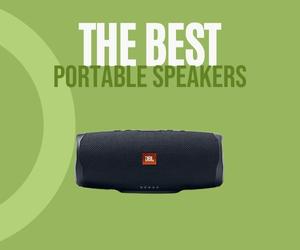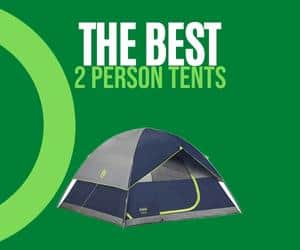When it comes to hiking, the right shoes can make all the difference. A good pair of hiking shoes will keep your feet comfortable and safe on the trail, while the wrong pair can lead to blisters, soreness, and even worse injuries.
With so many different types and brands of hiking shoes available on the market today, it can be hard to know which ones are right for you.
This article will discuss the different features to look for when choosing a pair of hiking shoes, as well as some of the best brands and models currently available.

7 Best Hiking Shoes
1. Danner Trail 2650
These boots are ideal for any occasion or activity. Whether you're trekking the Sierra Nevada Mountains in California, touring Europe, or just walking around town, these shoes will suit your needs. The Danner-built upper wraps the shoe with durability.
With an aim to provide comfort during long hikes, Danner created the Trail 2650 hiking shoe, which the historic Pacific Crest Trail inspired. The Pacific Crest Trail is a 2,650-mile journey stretching from Southern California's border with Mexico up to Washington's border with Canada. The trail is known for its tough terrain, so it's no surprise that the Danner Trail 2650 was built to handle anything you might encounter on your hike.
The upper of the shoe is made with a waterproof and breathable membrane, which will keep your feet dry even when you're hiking through wet conditions.
Pros
- Lightweight
- Suede sole
- Comfortable for high hiking
Cons
- A bit pricey
Also Read: Best Stanley Cup Tumbler and Bottles
2. Columbia Men's Crestwood Hiking Shoe
The Columbia Men's Crestwood Hiking Shoe is a great choice for anyone who wants a durable and comfortable shoe for hikes and other outdoor activities. The shoe is made with 100% leather, which is both breathable and durable.
Columbia provides outdoor apparel for a range of activities, including hiking, so it's no surprise that they would offer a great lightweight hiking shoes. All Columbia products are designed with cutting-edge technology and high-quality materials to provide customers with innovative products that are both functional and stylish.
Columbia Sportswear Company has been producing gear for people who enjoy the rough outdoors, such as those in the Pacific Northwest and Canada, for over 80 years.
Pros
- Inexpensive
- Rubber sole
- Durable leather upper
- Breathable
Cons
- Not as comfortable as some others
3. Merrell Men's Moab 2
The Moab 2 from Merrell is a reliable classic when it comes to hiking footwear, and for a good reason – it's comfortable, supportive, and tough enough to handle even the most challenging terrain.
With a Vibram manmade sole for excellent grip and traction, and a breathable mesh upper to keep your feet cool and dry, the Moab 2 is ideal for hot weather hikes. The Pigskin leather mudguard also helps to protect your feet from debris, and the contoured EVA footbed provides all-day comfort.
If you're looking for a versatile and affordable hiking shoe, the Moab 2 is a great option.
Pros
- Vibram TC5+ rubber sole
- Protective toe box cap
- Breathable mesh lining
Cons
- Traditional lace closure
4. Adidas outdoor Men's Terrex Ax3 Hiking Boot
As the branded name suggests, the Adidas Terrex Ax3 Hiking Boot is designed to provide excellent traction and support on a variety of surfaces. The Continental rubber sole gives you the stability and grip you need when hiking on slippery or uneven terrain, and the EVA midsole provides cushioning and support for your feet.
The Terrex Ax3 is also designed with a breathable mesh upper to keep your feet cool and dry, and the lacing system provides a secure and comfortable fit.
Pros
- Synthetic-and-mesh
- Regular fit
- Lightweight EVA midsole
Cons
- Traditional lace closure
5. Columbia Men's Newton Ridge Plus II Waterproof Hiking Boot Shoe
When hiking in wet or muddy conditions, you need a boot that will keep your feet dry and protected from the elements. The Columbia Men's Newton Ridge Plus II Waterproof Hiking Boot Shoe lets you enjoy your hike without worry, thanks to the waterproof leather and mesh upper.
The boot also features a PU-coated leather toe for added durability, and the midsole is made with an EVA foam that provides cushioning and support. The Omni-GRIP outsole offers great traction on a variety of surfaces, and the lacing system ensures a secure and comfortable fit.
Pros
- Multi-terrain traction system
- Lightweight for comfortable all-day wear
- Durable construction
- Breathable mesh exterior
- Stylish design
Cons
- It may not be as supportive as some other hiking boots
6. Merrell Moab 3
The Merrell Moab is the world's best-selling hiking boot, having been chosen for over a decade by hikers when they have to decide. Its predecessors have allowed 20 million people to go further outside because of their out-of-the-box comfort, durability, and all-purpose adaptability.
The new Moab 3 maintains those same core values with an updated design. Merrell's Select Dry waterproof bootie protects your feet from water and debris, and the Vibram outsole with cushioned midsole provides excellent traction and stability.
The Moab 3 is a great option for anyone looking for a comfortable, durable, and versatile hiking boot.
Pros
- Waterproof protection
- Vibram outsole for traction and stability
- Made in the USA
- Debris Protective toe cap
- Updated design
Cons
- It may be too narrow for some feet
7. Hoka Speedgoat 4
Living up to its name, this trail running shoe from Hoka is designed for speed on the most challenging of mountain trails. The 4th edition of the Speedgoat features a lighter weight construction and improved breathability to keep your feet comfortable on even the longest runs.
With a close-to-the-ground feel and plenty of cushioning, the Speedgoat 4 is ideal for those who want a fast shoe for tackling tough terrain.
It's Vibram Megagrip outsole ensures great traction on all surfaces, while the strategic placement of reinforced rubber pods adds durability in high-wear areas.
Pros
- Abrasion-free wear
- Ankle mobility
- Great traction
Cons
- Lack of arch support
What to Consider When Choosing the Best Hiking Shoes?
This section will help you understand what to look for when choosing the best hiking shoes for your needs.
Upper Material
The upper material of a hiking shoe is the part that covers your foot and protects it from the elements. The most common upper materials used in hiking shoes are leather, mesh, and synthetic materials.
Leather is the most durable of the three materials and offers the best protection from water and abrasion. However, leather is also the heaviest and least breathable material, which can make your feet sweat more on hot days.
Mesh is the lightest and breathable upper material, but it offers the least protection from water and abrasion.
Weight
Of course, heavy-weight shoes could make your hiking trip a lot more difficult, so you will want to choose a lightweight pair that still offers good support.
Soles
The soles of your shoes are essential for two reasons: they provide traction and protect your feet from sharp objects. The most common sole materials in hiking shoes are rubber, EVA foam, and polyurethane.
Stability and Support
You will want a shoe that offers good stability and support when hiking. This is especially important if you carry a heavy backpack or plan to hike over rough terrain.
Cushioning
What kind of cushioning you need in your hiking shoes will depend on the type of hikes you plan on taking. If you plan on doing a lot of long-distance hikes, you will want a shoe with more cushioning to protect your feet from the impact of each step.
Waterproofing
If you plan on hiking in wet or snowy conditions, you will want to choose a pair of shoes that offer good waterproofing. Waterproof hiking shoes are usually made with a waterproof and breathable membrane, such as Gore-Tex, that will keep your feet dry while still allowing them to breathe.
FAQs
Are trail running shoes OK for hiking?
No, running shoes are not ideal for hiking. They are designed for forwarding motion on even surfaces and do not offer the same support, stability, and grip as hiking shoes.
Do hiking shoes make a difference?
Yes, hiking shoes can make a difference. They are designed to offer more support and stability than running shoes or walking shoes, and they also have a more aggressive tread that can provide better traction on uneven and slippery surfaces.
What is the difference between a hiking boot and a hiking shoe?
Hiking shoes offer a number of advantages over hiking boots: they're softer and more flexible, easier to fit, and don't require any breaking in. They tend to work better in dry and gentler terrain, though some argue that they also perform better than boots in wet conditions.
Can I wear hiking shoes for walking?
Yes, you can use hiking shoes for walking. However, they are not as comfortable or supportive as walking shoes, and they may wear out faster if you use them for walking instead of hiking. Hiking shoes are usually bulkier and heavier than other types of footwear. They also tend to incur more wear-and-tear with everyday use.
How long do hiking shoes last?
Hiking shoes will last anywhere from 500 to 800 miles, depending on the quality of the shoe and how often you use them. After that, they will show signs of wear and tear, and you will need to replace them.
Can I wear hiking boots in the snow?
Your hiking boots can technically be worn in the snow, but if you're planning on doing more than just a light hike through some patches of snow, you'll want to get a pair of boots specifically designed for travel in snowy conditions.
Conclusion
Now that you know more about the best hiking shoes, it's time to start shopping for your next pair. Be sure to keep the information in this article in mind to help you choose the perfect shoes for your needs. And don't forget to break them in before hitting the trail!
EDM Sauce is reader-supported. We may earn a commission through products purchased using links on this page. Learn more about our process here.
Recommended Reading:




















